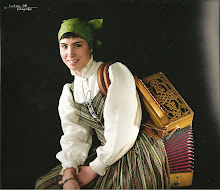·Metodo honekin, abestiak errezago ikasi ahal dituzte ikasleek, izan ere, asbetiaren entzumena arreta handiagoarekin egiten da eta falta diren hitzen hutsuneak betetzerakoan, hitz horiek nolabait barneratu egiten ditugu.
·As you sing a song they begin to anticipate the rhyming word. This is helpful in developing musicality. If there is any complication, some words can be spelled.
·Berriro ere, edozein hizkuntzatan egin daitekeela argitzen dizuet, baina nire adibidean ingeleseko abestia aukeratu dut, bidez batez hiztegia ere landu ahal izateko. Ahoskera eta intonazioa lantzeko ariketa egokia dugu hau.
Theme: Is This Love (Bob Marley)
I wanna _____(1)_____ you and treat you right;
I wanna love you every _____(2)_____ and every night:
we'll be _____(3)_____with a roof right over our heads;
we'll share the shelter of my _____(4)_____ bed;
we'll share the same _____(5)_____, yeah! - for jah provide the bread.
is this love - is this love - is this love -
is this love that i'm feelin'?
is this love - is this love - is this love -
is this love that i'm feelin'?
i wanna know - wanna _____(6)_____ - wanna know now!
i got to know - got to know - got to know now!
i-i-i-i-i-i-i-i-i - i'm willing and able,
so i throw my cards on your table!
i wanna love ___(7)___, i wanna love and treat, love and treat you right
i wanna love you every day and every _____(8)_____:
we'll be together, yeah! _____(9)_____ a roof right over our heads;
we'll share the shelter, yeah, oh now! - of ____(10)______ single bed;
we'll share the same room, yeah! - for jah provide the _____(11)_____.
is this love - is this love - is this love -
is this love that i'm feelin'?
is this love - is this love - is this love -
is this love that i'm _____(12)_____?
wo-o-o-oah! oh yes, i know; yes, i know - yes, i know now!
yes, i know; yes, i know - yes, i know now!
i-i-i-i-i-i-i-i-i - i'm willing and able,
so i throw my cards on your _____(13_____!
see: i wanna love ya, i _____(14)_____ love and treat ya -
love and treat ya feelin.
i wanna love you every day and every night:
we'll be together, with a _____(15)_____ right over our heads!
we'll share the shelter of my single bed;
we'll share the same room, yeah! jah provide the bread.
we'll share the shelter of my single bed.

